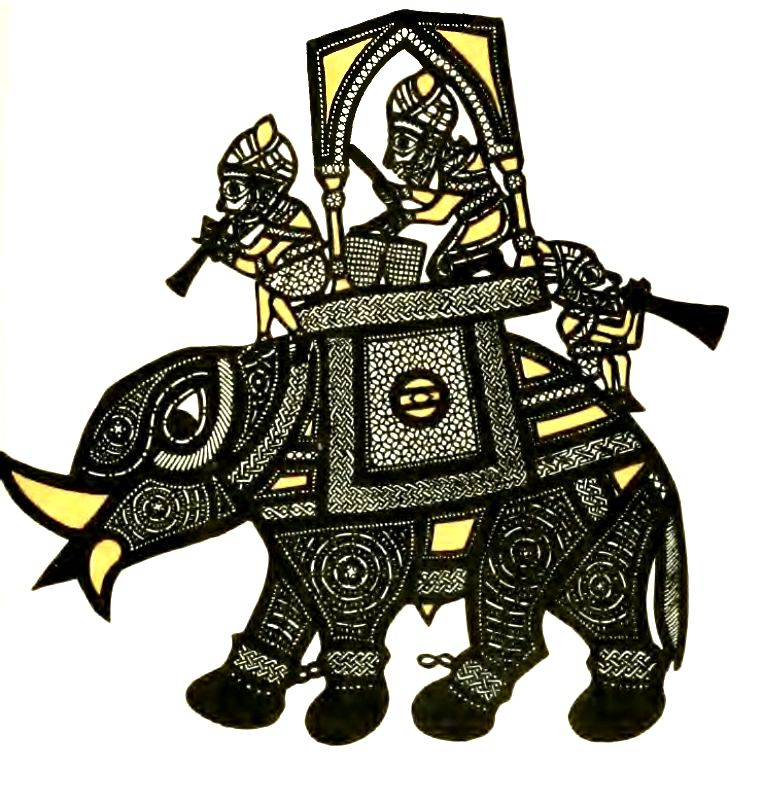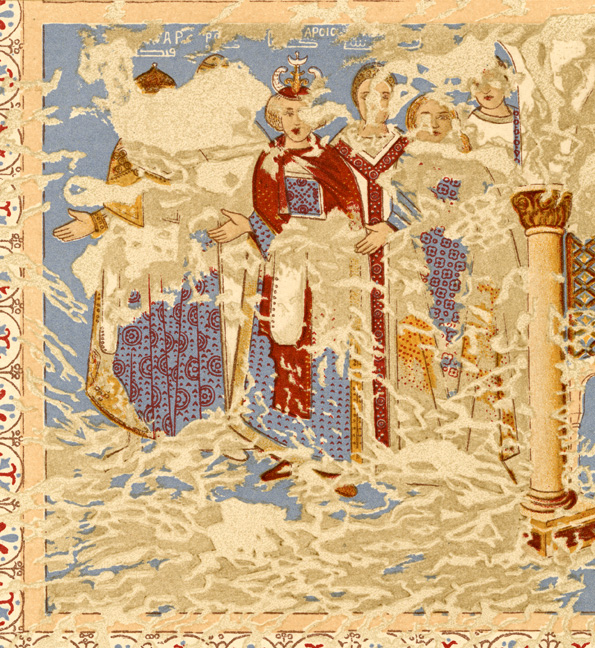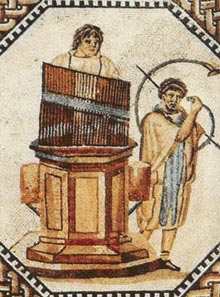|
Buisine
The ''buisine'' and the ''añafil'' were variations of a type of straight medieval trumpet usually made of metal, also called a herald's trumpet. While arguably the same instrument, the two names represent two separate traditions, in which a Persian-Arabic-Turkic instrument called the '' Nafir'' entered European culture in different places and times. The term ''buisine'' (Old French; also, ''busine'', ''buysine'', ''buzine'') descends from '' Buccina'', a Roman military horn. The horn was mainly used for military and ceremonial purposes. When Europeans went to the crusades, the instrument was seen as a proper military target (in the same way a flag or pendant was), something to capture and bring home. The term ''añafil'' descends from '' al-Nafir'', the Persian-Arab Islamic trumpet which was used by Moorish armies in Spain, before the Crusades. By the Reconquista (722–1492) when residents of the future Spain retook the Iberian Peninsula, ''añafil'' was part of the nation's l ... [...More Info...] [...Related Items...] OR: [Wikipedia] [Google] [Baidu] [Amazon] |
Clarion (instrument)
Clarion is a name for a high-pitched trumpet used in the Middle Ages and the Renaissance. It is also a name for a 4' organ reed stop that produces a high-pitched or clarion-like sound on a pipe organ in the clarion trumpet's range of notes. The word ''clarion'' has changed meanings over centuries and across languages. Today, in modern French'' clairon'' refers to the bugle, while in Italy '' chiarina'' refers to modern trumpets of historic design, made from bent tubing and without valves, similar to the natural trumpet. Resembling these instruments is the modern fanfare trumpet, like the ''chiarina'' or natural trumpet, but with the option of using valves. ''Clarion'' became a musical term to refer the upper register of the standard trumpet. However, a ''clarin'' trumpet did exist with a narrower bore than the standard trumpet and a "broad, flat mouthpiece," designed to "play the high partials." In war the trumpet historically had a harsh sound, often described as, "like the ... [...More Info...] [...Related Items...] OR: [Wikipedia] [Google] [Baidu] [Amazon] |
Al-Nafir
''Nafir'' (Arabic نَفير, DMG ''an-nafīr''), also ''nfīr'', plural ''anfār'', Turkish ''nefir'', is a slender shrill-sounding straight natural trumpet with a cylindrical tube and a conical metal bell, producing one or two notes. It was used as a military signaling instrument and as a ceremonial instrument in countries shaped by Islamic culture in North Africa, the Middle East and South Asia. In Ottoman, Persian and Mugulin miniatures, the ''nafīr'' is depicted in battle scenes. In Christian culture, it displaced or was played alongside of the curved tuba or horn, as seen in artwork of about the 14th century A.D. Similar straight signal trumpets have been known since ancient Egyptian times and among the Assyrians and Etruscans. After the fall of the Roman Empire, the straight-tubed Roman tuba continued to flourish in the Middle East among the Sassanids and their Arabic successors. The Saracens, whose long metal trumpets greatly impressed the Christian armies at the time ... [...More Info...] [...Related Items...] OR: [Wikipedia] [Google] [Baidu] [Amazon] |
Nafir
''Nafir'' (Arabic نَفير, DIN 31635, DMG ''an-nafīr''), also ''nfīr'', plural ''anfār'', Turkish ''nefir'', is a slender shrill-sounding straight natural trumpet with a cylindrical tube and a conical metal bell, producing one or two notes. It was used as a Signal instrument, military signaling instrument and as a ceremonial instrument in countries shaped by Islamic culture in North Africa, the Middle East and South Asia. In Ottoman, Persian and Mugulin miniatures, the ''nafīr'' is depicted in battle scenes. In Christian culture, it displaced or was played alongside of the curved tuba or horn, as seen in artwork of about the 14th century A.D. Similar straight signal trumpets have been known since ancient Egyptian times and among the Assyrians and Etruscans. After the fall of the Roman Empire, the straight-tubed Roman tuba continued to flourish in the Middle East among the Sassanids and their Arabic successors. The Saracens, whose long metal trumpets greatly impressed the ... [...More Info...] [...Related Items...] OR: [Wikipedia] [Google] [Baidu] [Amazon] |
Nafir (trumpet)
''Nafir'' (Arabic نَفير, DMG ''an-nafīr''), also ''nfīr'', plural ''anfār'', Turkish ''nefir'', is a slender shrill-sounding straight natural trumpet with a cylindrical tube and a conical metal bell, producing one or two notes. It was used as a military signaling instrument and as a ceremonial instrument in countries shaped by Islamic culture in North Africa, the Middle East and South Asia. In Ottoman, Persian and Mugulin miniatures, the ''nafīr'' is depicted in battle scenes. In Christian culture, it displaced or was played alongside of the curved tuba or horn, as seen in artwork of about the 14th century A.D. Similar straight signal trumpets have been known since ancient Egyptian times and among the Assyrians and Etruscans. After the fall of the Roman Empire, the straight-tubed Roman tuba continued to flourish in the Middle East among the Sassanids and their Arabic successors. The Saracens, whose long metal trumpets greatly impressed the Christian armies at the time ... [...More Info...] [...Related Items...] OR: [Wikipedia] [Google] [Baidu] [Amazon] |
Brass Instrument
A brass instrument is a musical instrument that produces sound by Sympathetic resonance, sympathetic vibration of air in a tubular resonator in sympathy with the vibration of the player's lips. The term ''labrosone'', from Latin elements meaning "lip" and "sound", is also used for the group, since instruments employing this "lip reed" method of sound production can be made from other materials like wood or animal horn, particularly early or traditional instruments such as the cornett, alphorn or shofar. There are several factors involved in producing different Pitch of brass instruments, pitches on a brass instrument. Slide (wind instrument), Slides, Brass instrument valve, valves, Crook (music), crooks (though they are rarely used today), or Key (instrument), keys are used to change vibratory length of tubing, thus changing the available harmonic series (music), harmonic series, while the player's embouchure, lip tension and air flow serve to select the specific harmonic produ ... [...More Info...] [...Related Items...] OR: [Wikipedia] [Google] [Baidu] [Amazon] |
Archiv Für Musikwissenschaft
The ''Archiv für Musikwissenschaft'' is a quarterly German-English-speaking trade magazine devoted to music history and historical musicology, which publishes articles by well-known academics and young scholars. It was founded in 1918 as the successor of the ''Sammelbände der Internationalen Musikgesellschaft'' by Max Seiffert, Johannes Wolf and Max Schneider, who were also the first editors. It was under the patronage of the Fürstliches Institut für musikwissenschaftliche Forschung zu Bückeburg. The first two volumes 1918/1919 and 1919/1920 were published by Breitkopf & Härtel, then the volumes 1921 to 1926 by . With the 8th volume the publication of the journal was stopped in 1927, but resumed in 1952 with the 9th volume. Publisher of the quarterly was Wilibald Gurlitt (in connection with Heinrich Besseler, Walter Gerstenberg and Arnold Schmitz), who assigned the editorship to Hans Heinrich Eggebrecht. With the 19th/20th volume 1962/1963 the Archive for Musicology w ... [...More Info...] [...Related Items...] OR: [Wikipedia] [Google] [Baidu] [Amazon] |
Middle Ages
In the history of Europe, the Middle Ages or medieval period lasted approximately from the 5th to the late 15th centuries, similarly to the post-classical period of global history. It began with the fall of the Western Roman Empire and transitioned into the Renaissance and the Age of Discovery. The Middle Ages is the middle period of the three traditional divisions of Western history: classical antiquity, the medieval period, and the modern period. The medieval period is itself subdivided into the Early, High, and Late Middle Ages. Population decline, counterurbanisation, the collapse of centralised authority, invasions, and mass migrations of tribes, which had begun in late antiquity, continued into the Early Middle Ages. The large-scale movements of the Migration Period, including various Germanic peoples, formed new kingdoms in what remained of the Western Roman Empire. In the 7th century, North Africa and the Middle East—once part of the Byzantine Empire� ... [...More Info...] [...Related Items...] OR: [Wikipedia] [Google] [Baidu] [Amazon] |
Umayyad Conquest Of Hispania
The Muslim conquest of the Iberian Peninsula (; 711–720s), also known as the Arab conquest of Spain, was the Umayyad Caliphate, Umayyad conquest of the Visigothic Kingdom, Visigothic Kingdom of Hispania in the early 8th century. The conquest resulted in the end of Christianity, Christian rule in most of Iberia and the establishment of Muslims, Muslim Arab world, Arab-Moors, Moorish rule in that territory, which came to be known as al-Andalus, under the Umayyad dynasty. During the caliphate of the sixth Umayyad caliph al-Walid I (), military commander Tariq ibn Ziyad departed from North Africa in early 711 to cross the Straits of Gibraltar, with a force of about 1,700 men, to launch a military expedition against the Visigothic Kingdom, Visigoth-controlled Kingdom of Toledo, Spain, Toledo, which encompassed the former territory of Roman Hispania. After defeating king Roderic at the Battle of Guadalete in July the same year, Tariq was reinforced by an Arabs, Arab force led by his s ... [...More Info...] [...Related Items...] OR: [Wikipedia] [Google] [Baidu] [Amazon] |
Cornu (horn)
A ''cornu'' or ''cornum'' (, " horn", sometimes translated misleadingly as " cornet"; : ''cornua'') was an ancient Roman brass instrument about long in the shape of a letter 'G'. The instrument was braced by a crossbar that stiffened the structure and provided a means of supporting its weight on the player's shoulder. Some specimens survive in the archaeological record, two from the ruins of Pompeii. The ''cornu'' may be difficult to distinguish from the '' buccina''. It was used by the Roman army for communicating orders to troops in battle. In Roman art, the ''cornu'' appears among the instruments that accompany games ''( ludi)'' or gladiator combat in the arena, as on the Zliten mosaic. History and usage It was invented by the Etruscans for use in their funeral processions and military. Roman artistic representations of the ''cornu'' are typically realistic. While Etruscan art usually depict the ''cornu'' in use alongside the lituus. It was likely a status symbol ... [...More Info...] [...Related Items...] OR: [Wikipedia] [Google] [Baidu] [Amazon] |






